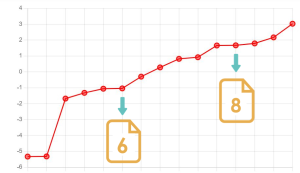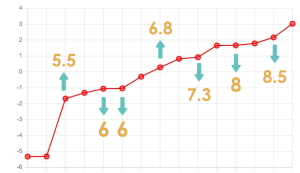
22 Sep Eliminating misconceptions
We wrote about preparing students for a peer assessment with the comparing tool. However, while comparing, some new questions or comments might pop up. This is no different for teachers. We have collected the most important misconceptions about the comparing tool so you can eliminate them.
“When I’m at the top of the ranking, I have a passing grade and I don’t need to do anything anymore.”
The ranking does not automatically say anything about grades; it only says something about the quality of your work relative to others. So being at the top of the ranking does not necessarily mean you are already there. Grades on a ranking can range from a 1 to a 10, but also, for example, from a 6 to a 7. The purpose of the ranking is to learn from it. The works below you on the ranking will do some things less well, but probably do some things better than you. What can you learn from this to improve your work further?
“If I’m at the bottom of the ranking, I have a failing grade.’
Actually, this answer is the same as the one above. The ranking does not automatically say anything about grades; it only says something about the quality of your work relative to others. Grades on a ranking can range from a 1 to a 10, but also, for example, from a 6 to a 7. The purpose of the ranking is to learn from it. Take a look at your fellow students’ works, or (if feedback is given) their feedback. Can you use this information to improve your own work? Or can you see what things you are actually already doing well relative to others?
“I’ve been compared to someone else. So if I’m in a class with really good peers, I get a lower grade.”
This is not the case. Ranking and giving grades have nothing to do with each other. Ranking is done by comparing, but giving grades is never done by comparing.
Grades are not given until the comparing is over. For example, teachers discuss two works on the ranking and give them a grade.

The rest of the grades are determined by the distance between them on the ranking.

Teachers may also have added benchmarks, which are works from previous years that have already been graded. By including the benchmarks in the comparison, the rating is always done relative to an already known rating.

“I don’t agree with the idea of being ranked. It feels like it becomes a competition.”
It may sound lame, but when you get a grade the same thing actually happens. Your work is ranked from 1 to 10. In Comproved, however, the goal is primarily learning, not grading. You can use the ranking information to see for yourself what you can improve, but at the same time you can also see what you are already doing well.
It is precisely by comparing your work with that of others that it becomes much clearer how the same task can be done in different ways. The goal is not to be at the top of the ranking, the goal is to gather information about what you do well as well as what you can improve. And you can make good use of other people’s work for that.
“If I am at the bottom of the ranking, I have failed.”
Absolutely not! Comparing is not meant to tell you that you are worse or better than everyone else, it is meant to teach you from everyone else. Your performance on a task vs. who you are and what you can do are different things. Did you feel you had already done well and the feedback shows that there is still much to be done? Have a conversation with your teacher. If you are at the bottom of the ranking, you actually have a lot of information to learn from and move forward with. In fact, you have the most information from everyone to improve your work.
“I can’t get the same grade as a fellow student because you always have to pick one work as the better one in a comparison.”
This is not correct. You can certainly still get the same grade as your fellow student. Because we make many comparisons with many different evaluators, a work will come back in different pairs very often. If two works have the same level they will be at almost the same place in the ranking. If grades are given, works that end up in almost the same place will get the same grade. See also the ranking in the picture above, where two works have been given the same grade.
“My peers can’t give good feedback at all.”
Giving feedback also has to be learned. So the quality of feedback from your peers also varies. The advantage of working in Comproved is that you get feedback from multiple peers. One student may have more experience in giving feedback than the other, and so there is always useful feedback among the comments.
In our experience, students are better at giving feedback than you might think. Do you still feel that you are not getting enough information from the feedback, or are in doubt about it? Have a conversation with your teacher.
Have you heard more questions from students and are looking for answers? Share them with us and we’ll be happy to help!




